IoT & Gateway Applications
Detection of Environmental Influences Indoors
The detection of environmental parameters plays a crucial role in modern building technology and indoor monitoring. An advanced sensor system with both Wi-Fi and LTE enables comprehensive and flexible monitoring of these parameters. The multi-sensor system detects temperature, humidity, VOC, movement, ambient light, noise, and additionally includes GPS and a microphone.
This includes motion detectors that recognise activity and the presence of people in the room, as well as temperature sensors that provide precise measurements of the room temperature. Indoor air quality is monitored by sensors for humidity and VOCs, which measure pollutants and general air purity.
By integrating Wi-Fi and LTE into the sensor system, reliable and continuous data transmission is ensured, even in areas with poor Wi-Fi coverage. This enables real-time monitoring and analysis of the collected data, which in turn allows quick reactions to changes in environmental conditions. Such systems are used in buildings, industrial plants, offices and residential homes.
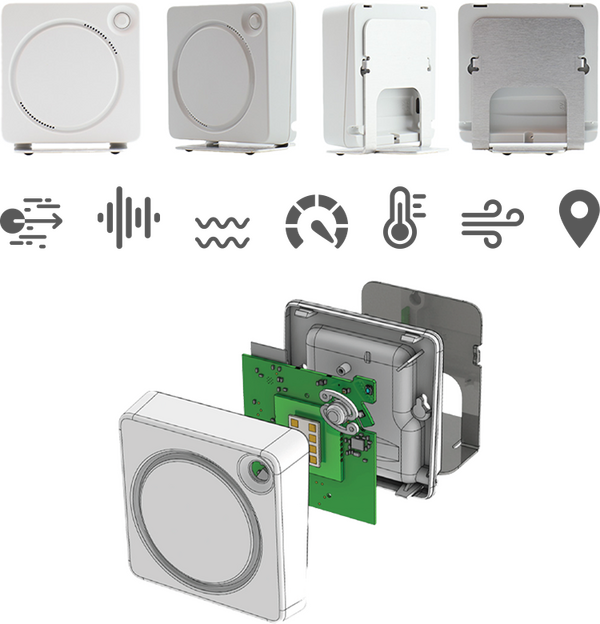

Monitoring Senior Citizens
One variant of the multi-sensor system is the ellio home emergency call system. It uses the sensors to detect environmental influences. If certain parameters such as movement, temperature or lighting conditions are absent for a selected period of time, the home emergency call system interprets this as inactivity and automatically sends a warning message to family members or friends.

Integration of Customer Apps
The home emergency call system is linked to an app that is installed on the phones of family members or friends and via which users receive push notifications and emails about unusual inactivity directly. This enables relatives to help senior citizens in good time and check that everything is OK.

Smart Alarm System for Camping
Another variant is the smart alarm system ellioS. This uses the same sensors to detect changes in parameters. The device monitors campers or holiday homes securely and sounds the alarm as soon as suspicious activities are detected. The sensors also raise the alarm if, for example, the temperature is too low or the indoor air quality is poor.

Virtual Sensor Camera
The intelligent alarm system uses built-in sensors to display real-time data from the camper. A sensor camera of this type is ideal for use in environments where privacy is important. In addition, these sensors are more robust and can be optimised for specific applications, making them versatile and efficient in monitoring.
Spexor - The Multifunctional IoT Device
Spexor from Bosch is a mobile security assistant. It not only detects burglaries, but also monitors the air quality and reports an alarm in the event of frost or heat. Many small sensors continuously measure the monitored environment, providing protection in a variety of everyday situations.
The only 12 cm small mobile security assistant scans the environment with its high-quality sensors. Spexor recognizes a break-in by evaluating the combinations of sensor data. Motion, light, temperature, noise, and air quality sensors provide the necessary monitoring data. It also evaluates the room's air quality. If the sensors detect an anomaly in the monitored environment, Spexor notifies the background system and thus the smartphone.
The alarm gadget works without cords or a router, and its battery lasts up to 2-3 weeks in power saving mode. This enables Spexor to be used in a variety of monitoring scenarios, such as burglary detection.
Alarm system with WOW effect
Our developers and designers of pironex were not only able to convince with the ergonomic and compact design. Every detail of this product has been carefully planned and implemented in a user-friendly manner. The capacitive buttons and the double-click function enable communication without an app, and the colour and acoustic signals provide information about the air quality. You can find more information about Spexor at: https://www.spexor-bosch.com/de/
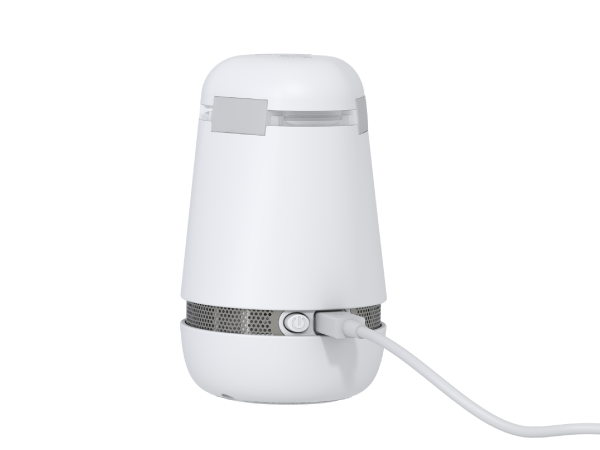
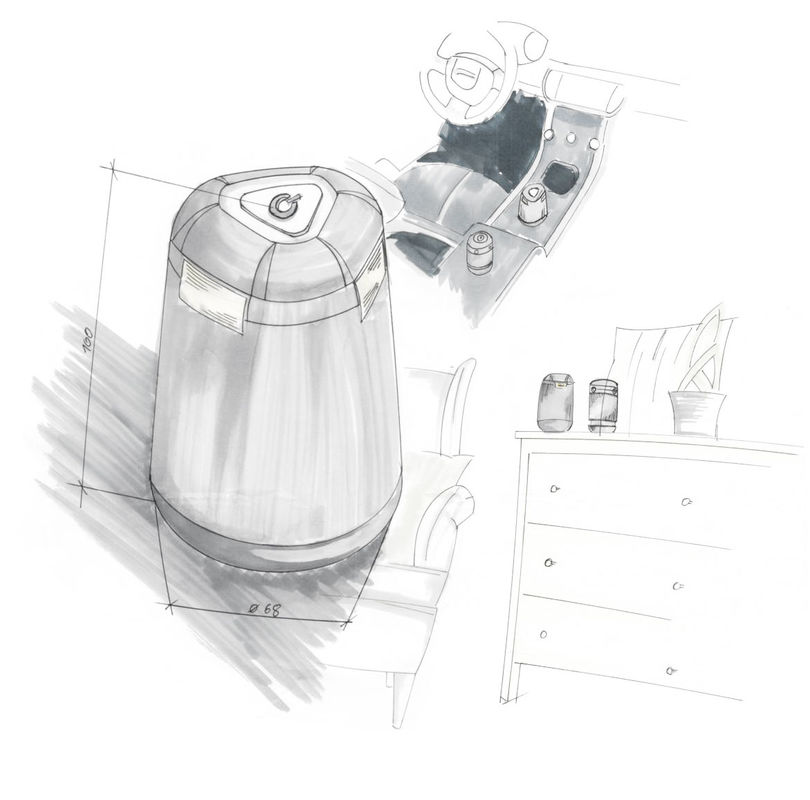
Design
Pironex engineers conceived and designed the design concept with the basic requirements for the device (design, function, ergonomics, etc.). In addition to aesthetic functions, functional requirements for usability, manufacturability and durability were also included. A large number of sketches and renderings were developed and presented for the selection of the basic form. The Spexor design is timeless and beautiful.

3D Printing
A manufacturing and construction concept was created parallel to the design draft. From the component separation to the complete installation space arrangement (package), all design-relevant details (such as circuit board attachment, battery holder or antenna guide) were constructed and specified three-dimensionally in CAD. 3D printing of the individual elements enabled a quick and cost-effective functional test in the development process.
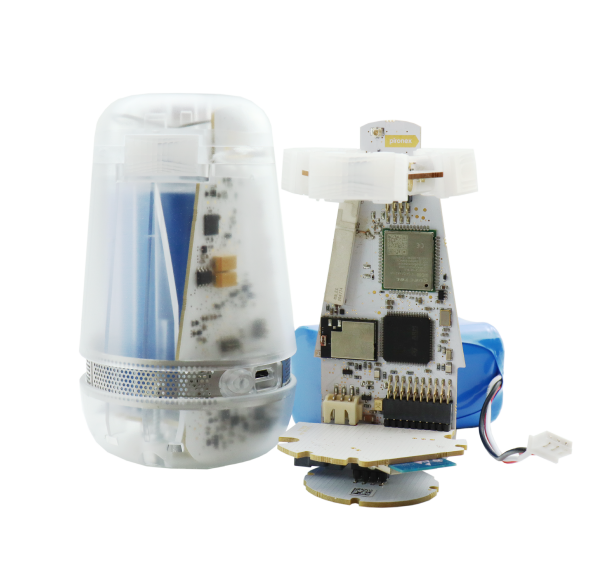
Prototyping
In the next step, the first prototypes of the Spexor were built. Thanks to our fully equipped prototype construction department, we were able to hand over a first functional "Spexor" prototype to our customer in just a few weeks, in coordination with the procurement of the components. The assembled circuit boards fitted perfectly. The functional software also worked as hoped and the connection to the native app could be established and tested.
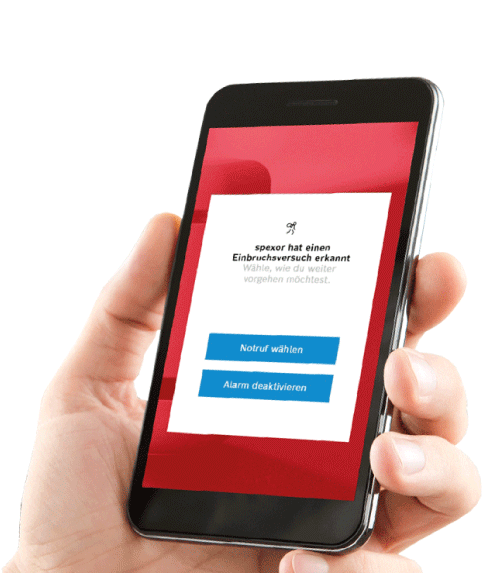
Native Apps
The Spexor is controlled by users via native apps for iOS and Android. These apps form the interface between the device and the users. pironex develops the functional apps on the basis of extensive design drafts with coordinated UX design. Functional groups such as user management, device control and displaying the current sensor data as well as events are things that we understand and represent in the interests of the user.
Action to Activate the Cities
Street-Points is a walking and movement game to activate people in urban areas. The smart game boxes are distributed in the districts. The overall system game is an IoT project in a classical sense. The game boxes are IoT end nodes, while the players, objects, and portal as an administration system are cloud solutions.
"Kreuz und Quer" (crisscross) is a variant of the Street Points campaign. The smart game boxes are distributed in the city districts. Equipped with a flyer and an RFID game card, the children and families go in search of the boxes and collect climate and activity points.
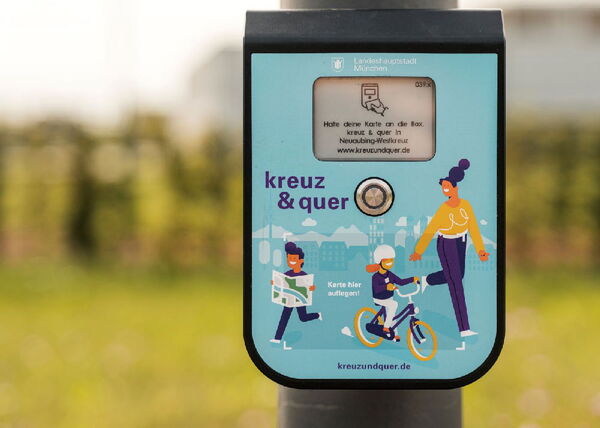

Small Computers
The game boxes are energy-independent devices that are powered from a battery pack for several weeks. Each game box has an RFID reader for scanning the RFID cards, an e-paper display, GPS for locating the boxes and mobile communications for data connection to the Street-Points background system. The IoT devices are intended to be maintenance-free and functional in harsh environments.

For the People
The smart game boxes are distributed all over the city. Equipped with a flyer and an RFID game card, the children and families set off in search of the boxes. The achieved score is displayed directly on the screen. The players "level up" and are happy about their successes. Thanks to the use of RFID cards and the absence of an app for mobile phones, the children are on an equal footing. The campaign is non-discriminatory.

Background System
The data from the IoT game boxes is sent to the background system via mobile communications. The backend contains the database and controls for the overall game. The game boxes themselves are monitored and RFID cards, users and user groups are administered. The frontend for the game's administrators is clearly laid out and complies with current data protection guidelines. Extensive statistics prove the effectiveness of the game.

Parent Taxi
The game has several positive effects for the cities. Street-Points is a building block on the way to climate neutrality in cities. Issues such as parental taxis, lack of parking space or traffic jams are being permanently changed by influencing people's awareness of mobility. It starts with the traffic education of the children. People become more conscious of their surroundings as a result of playing, they learn to live without a car and to use alternative modes of transportation.


